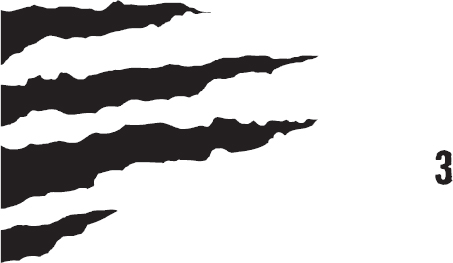
IT TOOK SEVERAL HOURS IN ALL, BUT DR. CATALYST released four more containers of his Blood Jackets into the wild at various locations around Florida City. He suspected there were now at least two thousand free in the night sky. It would be difficult to determine what impact they might have on the ecosystem, but at this point he no longer cared. These creatures were voracious feeders and would be difficult to catch. They would occupy the time and resources of those who pursued him, leaving him free to continue his gallant struggle.
The animals swarmed through the darkening sky. Their first instinct would be to find a place to nest and grow the colony. Once they found a secure home in which to spend the daylight hours, with access to a freshwater source, hunting would begin. The resulting terror would overtake the city, and he would finally be free to complete his work.
Dr. Catalyst watched the last group fly off into the darkness from the safety of the boat’s cabin. They were a magnificent species. It had been a much bigger scientific challenge creating these hybrids. The species that he crossed to breed his Pterogators and Muraecudas shared common evolutionary and genetic ancestors. Vampire bats and baldfaced hornets were from two entirely different classes: mammal and insect. Despite this, there were similarities in their behavior. Bat colonies and hornet hives were alike in that each member had different roles and duties. Vampire bats shared blood with colony members to sustain their numbers. Hornets were highly protective of their nest and the queen. Regardless of how difficult it was, Dr. Catalyst was so brilliant that he had made it work.
Now it was time to watch them in action.

The first colony released that night found a home in the steeple of a church not far from the Florida City downtown area. The vented structure was high above the building and offered easy access in and out. It was also near several residential areas, which would offer plenty of food sources.
Two of the colonies found refuge in deserted warehouses in an abandoned industrial park on the outskirts of Florida City. In truth, they were located too close to each other, and would soon begin fighting over territory. One of them would eventually drive the other out, forcing the refugees to find a new home. But for the first night, each building gave them shelter from the coming storm.
The fourth batch first stopped to rest on the roof of the Doyle home but, after terrorizing the Doyle family, moved on. They flew through the night behaving almost like a living cloud. Their screeching became louder and more frequent until it eventually sounded like a constant wail. Dogs barked at the sound, cats scurried for cover beneath porches and picnic tables, and people who happened to be outside at that late hour looked up, wondering what could be causing such a ruckus.
On and on they flew, occasionally pausing to rest in trees or on rooftops, but unable to find a suitable roost. The wind was getting stronger, and the first drops of rain were falling from the clouds when a single member of the colony returned to the rooftop where the others rested. Screeching, the lone Blood Jacket gave a signal to the others, who rose into the sky and followed.
From the air the building looked like a giant letter H. But at the bottom right of the structure were numerous large industrial roof vents. Several of the slats on the vents were rusted through and broken off, leaving an opening sufficient in size for the colony to venture through. The ductwork inside was perfect for nesting and offered protection from the elements and any potential predators.
The clouds opened, and as the rain fell, hundreds and hundreds of South Florida’s newest invasive species entered Tasker Middle School.